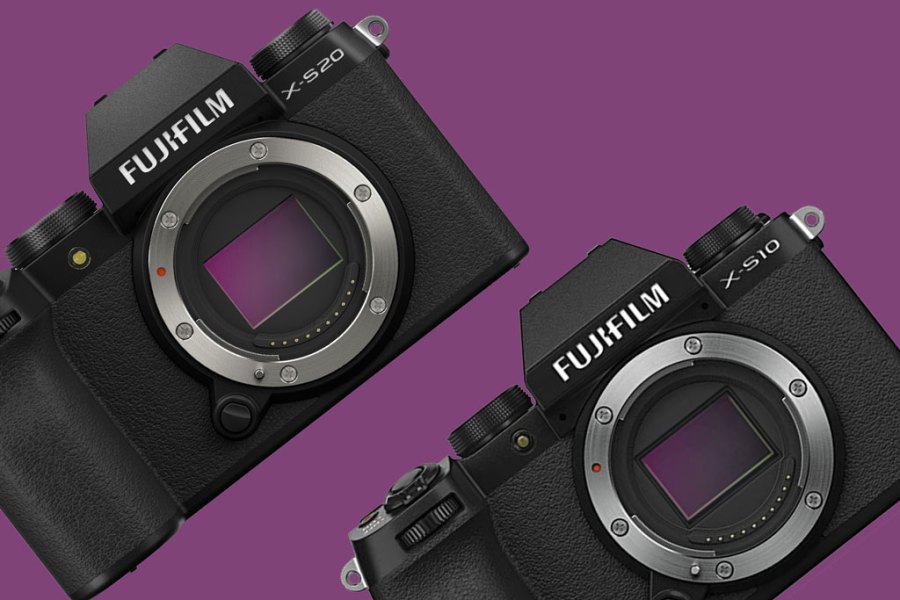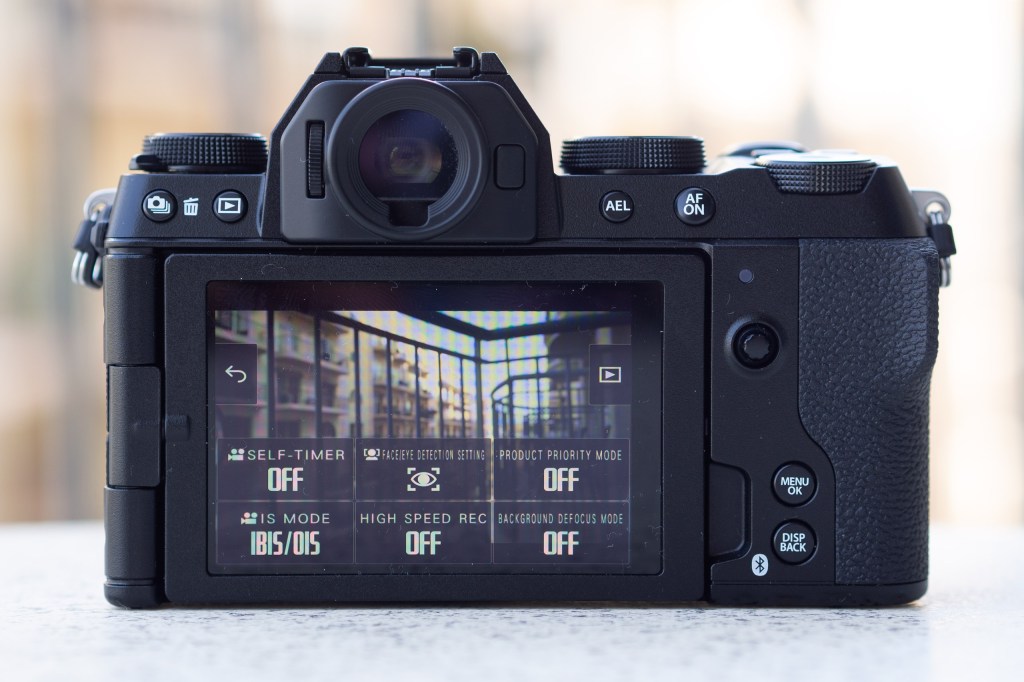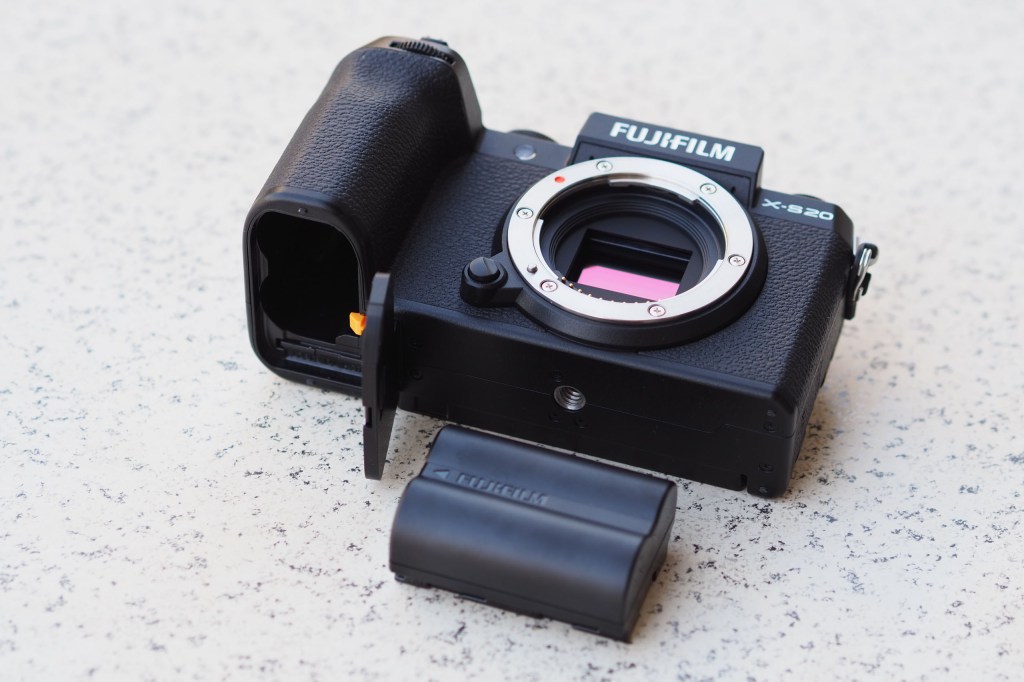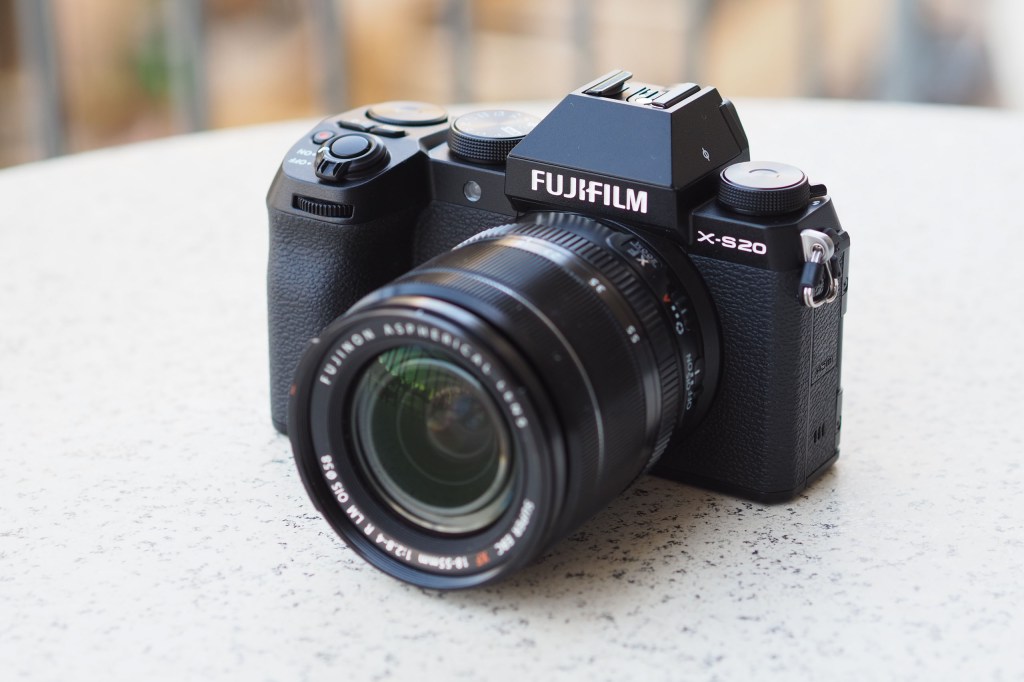Announced on 24 May, the Fujifilm X-S20 updates the Fujifilm X-S10, but what are the main differences between these two models? Find out below…
Things you need to know about the Fujifilm X-S20 compared to the Fujifilm X-S10
Fujifilm X-S20 Vs Fujifilm X-S10 Sensor Technology and Features
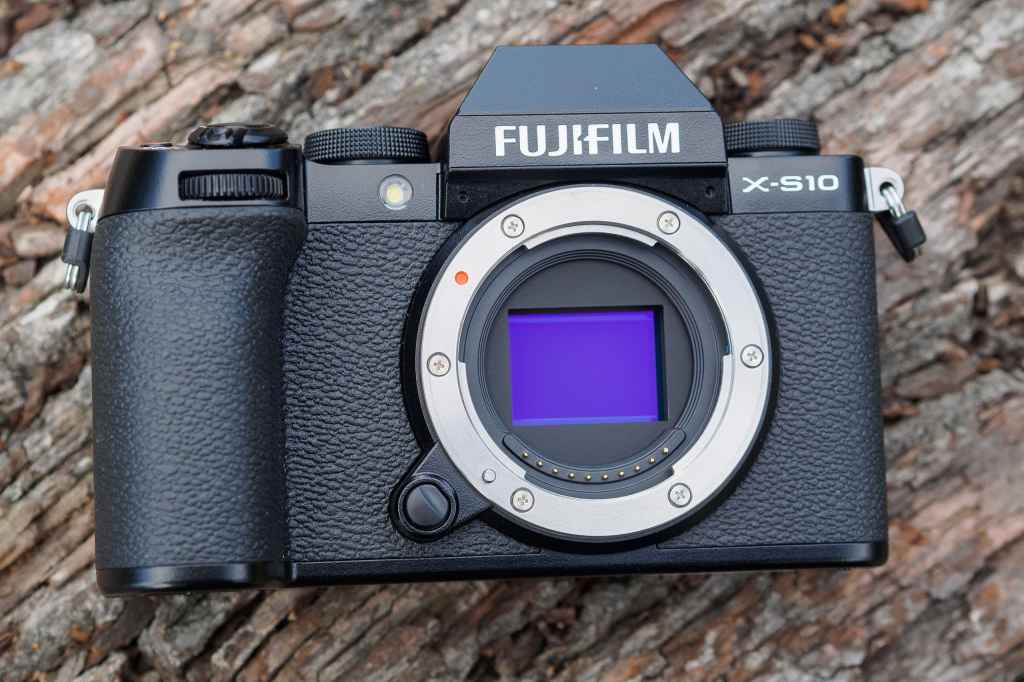
The X-S10 is based around Fujifilm’s unique 26.2MP X-Trans CMOS sensor. Photo credit: Andy Westlake.
Image Sensor:
- Fujifilm X-S20: 26.1MP APS-C X-Trans CMOS 4 sensor
- Fujifilm X-S10: 26.1MP APS-C X-Trans CMOS sensor
The Fujifilm X-S20’s sensor features a back-illuminated (BSI) design, and is joined by the X-Processor 5 (the Fujifilm X-S10 has the X-Processor 4) for improved power efficiency.
Image stabilisation:
- Fujifilm X-S10: 5-axis in-body stabilisation
In our review of the X-S10, we found that despite its five-axis in-body image stabilisation (IBIS) system being smaller than the X-T4‘s, still rated for between 5.5 and 6 stops of shake reduction with the vast majority of the firm’s lenses. The Fujifilm X-S20 continues to offer IBIS, which is said to give up to 7.0 stops of image stabilisation (tested with the XF 35mm F1.4 R lens).
ISO range:
- Fujifilm X-S20: ISO 160-12,800 (standard), ISO 80-51,200 (extended)
- Fujifilm X-S10: ISO 160-12,800 (standard), ISO 80-51,200 (extended)
Fujifilm X-S20 Vs Fujifilm X-S10 Shooting and Focus
Continuous shooting:
- Fujifilm X-S20: 30fps continuous shooting (electronic, 1.25x crop), 20fps (electronic, blackout free), 8fps (mechanical)
- Fujifilm X-S10: 8fps (mechanical), 20 fps (electronic), 30 fps (with a 1.25x crop)
The Fujifilm X-S20 and X-S10 both notably include four custom modes and Film Simulation settings.
Shutter speeds available:
- Fujifilm X-S20: 1/4000sec (mechanical), up to 1/32,000sec (electronic)
- Fujifilm X-S10: 1/4000sec (mechanical), 1sec-1/32,000sec (electronic)
AF system:
- Fujifilm X-S20: Auto mode AI subject detection and tracking AF for stills and video, face and eye detection
- Fujifilm X-S10: 117 or 425, face and eye detection and subject tracking modes
The X-S20 features the AI based auto-focus system from the X-H2, X-H2s, X-T5 series, but with additional subject detection, it can be set to animals, birds, cars, motorcycles, bicycles, airplanes, trains, insects and drones. Like its predecessor, it also has face and eye detection, however this is in a different menu, and does need to be manually selected, unless you’re using the Auto mode.
Fujifilm X-S20 Vs Fujifilm X-S10 Screen, Viewfinder and Video
Screen:
- Fujifilm X-S20: 1.84m-dot vari-angle 3.0 inch touch-screen
- Fujifilm X-S10: 1.4m-dot fully-articulated touchscreen
Viewfinder:
- Fujifilm X-S20: 2.36m-dot EVF, 0.62x magnification, with eye-detection and dioptre adjustment
- Fujifilm X-S10: 2.36m-dot, 0.62x magnification
Video:
- Fujifilm X-S20: Upto 6.2K/30P, 4K/60p, 1080/240p video, up to 360Mbps
- Fujifilm X-S10: 4K up to 30p; Full HD up to 240p
The video features of the Fujifilm X-S10 already made it a good choice for vloggers and the Fujifilm X-S20 adds to this. This camera comes with video features for budding and experienced videographers and vloggers like 4K/60P resolution live streaming and a Vlog mode. Video recording time is said to be up to 95mins (FullHD, actual), or up to 150min (FullHD, continuous, with external power).
Fujifilm X-S20 Vs Fujifilm X-S10 Memory, Ports and Connectivity
Memory card slots:
- Fujifilm X-S20: Single SD card slot – UHS-II compatible
- Fujifilm X-S10: SD, SDHC, SDXC slot – UHS-I compatible
Ports and Connectivity:
- Fujifilm X-S20: Wi-Fi, Bluetooth, USB-C, USB
- Fujifilm X-S10: Wi-Fi, Bluetooth, Microphone, HDMI, USB-C
Battery life:
- Fujifilm X-S20: Up to 750 shots (normal) 800 shots (economy mode)
- Fujifilm X-S10: Up to 325 shots
The Fujifilm X-S20 uses the NP-W235 battery from the X-T4/X-T5 rather than the NP-W126S Li-ion battery the Fujifilm X-S10 uses.
Fujifilm X-S20 Vs Fujifilm X-S10 Body
Size and Weight:
- Fujifilm X-S20: 127.7 x 85.1 x 65.4mm, 491g (with battery and memory card)
- Fujifilm X-S10: 126 x 85.1 x 65.4mm, 465g
The X-S20 sits above the X-T30 II, but below the X-T5, and with a larger grip it is suitable for a wide range of shooting, including using larger lenses, whilst maintaining a relatively compact size that makes it suitable for travel and video use. One area where both the X-S20 and X-S10 miss out however, is in weather-sealing.
On the back of the X-S20, there are two screw holes, plus a hidden (covered) connection, and this lets you connect the optional cooling fan that was introduced with the X-H2s.
Price:
- Fujifilm X-S20: $1299 / £1249 (body-only)
- Fujifilm X-S10: $999 / £999 (body-only)
It is worth noting that the Fujifilm X-S10 is one of the most affordable cameras in the Fujifilm X-mount range.
For a more in-depth look of both cameras, check out our Fujifilm X-S20 review and Fujifilm X-S10 review.
Related content:
- Fujifilm X-S10 Field Test in New Zealand
- Best Fujifilm cameras to buy in 2023
- Fujifilm X-T5 vs Fujifilm X-T4
- Best vlogging tips and how to get started

